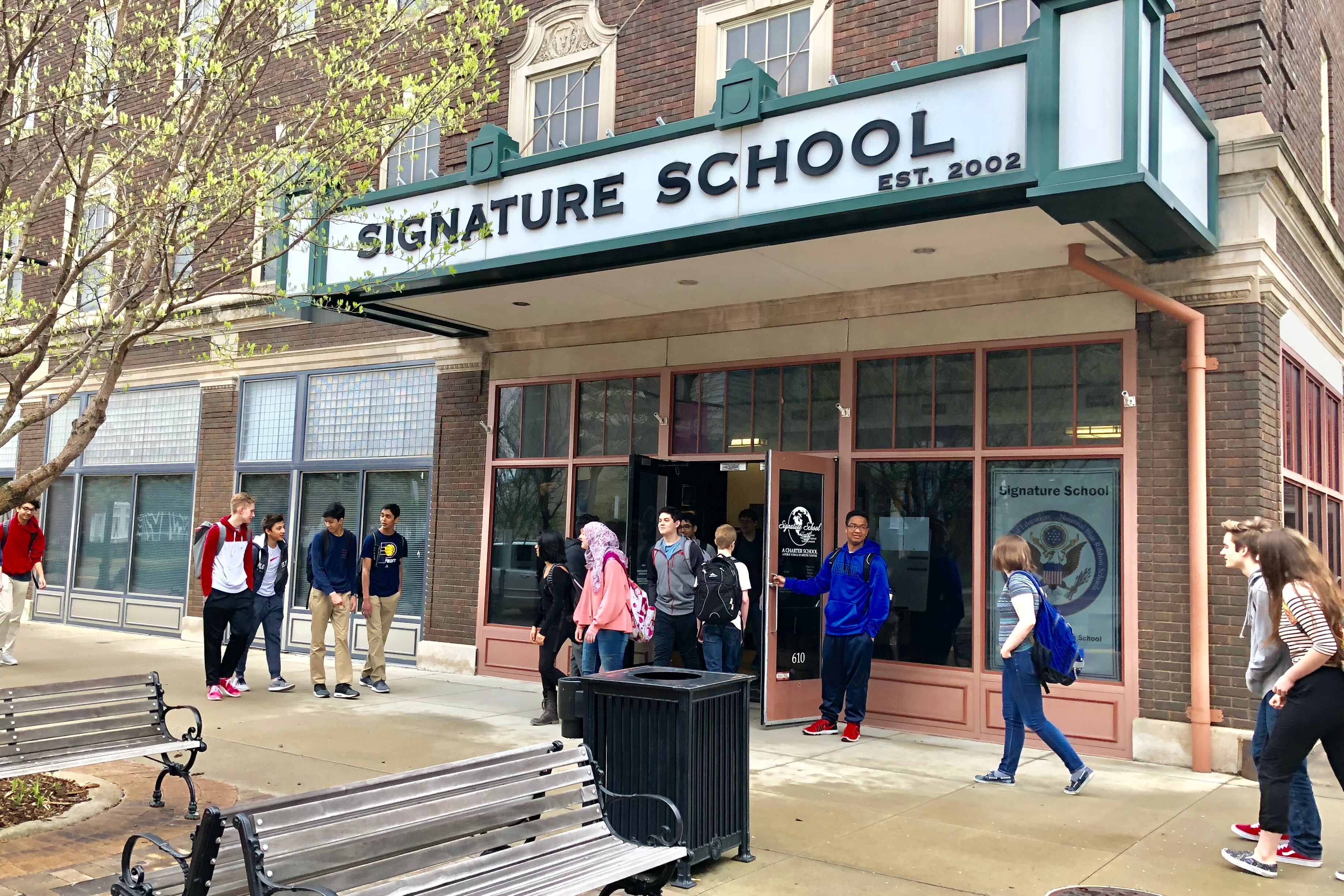One of the nation’s top-ranked public high schools sits on Main Street in downtown Evansville, Indiana’s third-largest city.
Signature School ranked No. 1 in Indiana and No. 15 nationwide in the latest U.S. News and World Report rankings released this week. The high school rankings weigh factors such as graduation rates, state test scores, and how many students take advanced courses.
Signature, one of the state’s oldest charters, is famously rigorous. Every freshman takes Advanced Placement U.S. History, which means they can earn college credits if they score high enough on the end-of-year exam. Students also have the opportunity to earn an International Baccalaureate diploma. In recent years, every Signature senior has graduated, and almost every student has gone on to college.
“We philosophically operate on the belief of setting the bar high and giving students the support they need to achieve goals,” executive director and principal Jean Hitchcock said.
In some ways, Signature appears more like a college campus than a high school. When the campus is open — it’s closed now, due to coronavirus — students eat lunch from local restaurants, take gym classes at the YMCA down the street, and use the city’s public library.
The school doesn’t have a football team, though students can play golf or run cross-country.
“We try to be very transparent about who we are and what the workload is, what the demands are,” Hitchcock told Chalkbeat. “We try to be really clear in what the expectations are, because we want it to be a good fit.”
Signature is, by state law, open to all Indiana students, who don’t need to test in or meet specific academic requirements. Students still have to choose to apply to the charter school and come up with their own transportation.
Each year, more students want to attend than the 400-student school has spots for, which results in an enrollment lottery.
Signature School tends to attract students from more affluent families, with only 15% of those enrolled qualifying for free or reduced-price meals, a proxy for poverty. The local Evansville Vanderburgh school district, by contrast, has more than half of its students coming from low-income families.
With a student body that is two-thirds white, roughly mirroring the surrounding area, Signature School enrolls a higher proportion of Asian students (17.9%) than the local district (1.3%), but black students are under-represented. Only 3.5% of Signature students are black, compared to 14.7% in the district.
Just two of Signature School’s nearly 400 students receive special education services, and only three students are learning English as a new language.
Hitchcock said the lack of socioeconomic diversity is likely a result of the school relying on word-of-mouth to attract students. She also believes the number of students qualifying for subsidized meals is lower than it should be because students may not fill out the forms for fear of being stigmatized.
Signature School’s focus on advanced coursework stems in part from its history, having started in 1992 as a part-time enrichment program under the Evansville district with the support of a local business leader. In 2002, educators established it as a separate school under the state’s new charter school law, though the district still has an oversight role.






